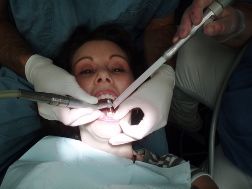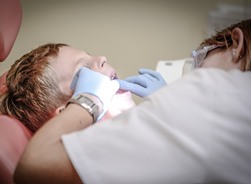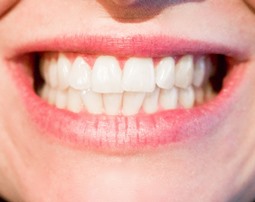How to Pick a Dental Hygienist Program near Salmon Idaho
 Choosing the right dental hygienist school near Salmon ID is an essential first step toward launching your new career in dentistry. But before you can make your selection, you need to assess and compare your school options. There is much more to doing your due diligence than selecting the training with the least expensive tuition or enrolling in the school that is closest to your home. There are other crucial issues to take into account also, including the school’s reputation and accreditation. Dental hygienists generally earn an Associate Degree, as compared to a certificate usually earned by assistants, and can take anywhere from two to three years to accomplish. Naturally with the more extensive training of a hygienist comes more cost. We will cover all of these factors and additional questions that you need to be asking the dental hygienist colleges you are reviewing later in this article. But first, let’s review the roles of dental hygienists and the training programs offered.
Choosing the right dental hygienist school near Salmon ID is an essential first step toward launching your new career in dentistry. But before you can make your selection, you need to assess and compare your school options. There is much more to doing your due diligence than selecting the training with the least expensive tuition or enrolling in the school that is closest to your home. There are other crucial issues to take into account also, including the school’s reputation and accreditation. Dental hygienists generally earn an Associate Degree, as compared to a certificate usually earned by assistants, and can take anywhere from two to three years to accomplish. Naturally with the more extensive training of a hygienist comes more cost. We will cover all of these factors and additional questions that you need to be asking the dental hygienist colleges you are reviewing later in this article. But first, let’s review the roles of dental hygienists and the training programs offered.
[campusexplorer header_text=”Find Dental Hygienist Schools Near You!” aos=”75346615″ concentration=”2D77CE61″ tracking=”DENTHYG”]
The Duties of a Dental Hygienist
 When comparing the duties of a dental assistant to that of a hygienist, the most significant difference is undoubtedly that the hygienist works more on their own. Dental assistants work with and assists the Salmon ID dentists and the practice. Hygienists, while also supporting the practice, deal with the patients more on a one-to-one basis. They are frequently the initial person a patient encounters when called from the waiting area. They examine every patient’s teeth and gums and present their results to the dentists. They may also carry out basic procedures. Depending on state law, a hygienist’s duties may include:
When comparing the duties of a dental assistant to that of a hygienist, the most significant difference is undoubtedly that the hygienist works more on their own. Dental assistants work with and assists the Salmon ID dentists and the practice. Hygienists, while also supporting the practice, deal with the patients more on a one-to-one basis. They are frequently the initial person a patient encounters when called from the waiting area. They examine every patient’s teeth and gums and present their results to the dentists. They may also carry out basic procedures. Depending on state law, a hygienist’s duties may include:
- Removing tartar, stains and plaque
- Applying fluoride treatments
- Polishing teeth and applying sealants
- Instructing patients regarding oral care
- Taking and developing X-rays
- Removing sutures and applying fillings
In order to be licensed in almost all states, dental hygienists must graduate from a Commission on Dental Accreditation (CDA) accredited dental hygiene program. They also must pass the National Board Dental Hygiene Exam in addition to passing any state licensure examinations. After they have fulfilled these requirements they are considered fully licensed and can add the “RDH” designation to their names, signifying Registered Dental Hygienist.
Dental Hygienist Education Options
Because of the added responsibility in contrast to an assistant, dental hygienists working in Salmon ID dental offices are generally required to hold an Associate Degree in dental hygiene rather than a certificate. These programs can require anywhere from two to as long as three years to complete and must be accredited by the CDA in nearly every state. They are offered in community colleges as well as trade and technical schools. And in addition to classroom studies learning the fundamentals of dental hygiene, there will be a clinical aspect to the training as well| A number of programs also sponsor internships with local dental practices or dentists.
Online Dental Hygienist Programs
 Enrolling in an online dental hygienist program can be a viable option for obtaining your education. Just keep in mind that the program will not be totally online, since there will be a practical portion to your training. But the balance of your classes will be available by means of your personal computer in the convenience of your Salmon ID home or elsewhere on your tablet or laptop. For those working while attending college, online dental classes make education much more accessible. Many may even charge lower tuition fees than their traditional counterparts. And supplementary expenses for items like books, school supplies and commuting may be reduced also. The clinical training can usually be completed at a community dental practice or in an on-campus lab. With both the clinical and online training, everything needed to obtain the proper education is provided. If you have the discipline for this style of education, you might find that enrolling in an dental hygienist online program is the right option for you.
Enrolling in an online dental hygienist program can be a viable option for obtaining your education. Just keep in mind that the program will not be totally online, since there will be a practical portion to your training. But the balance of your classes will be available by means of your personal computer in the convenience of your Salmon ID home or elsewhere on your tablet or laptop. For those working while attending college, online dental classes make education much more accessible. Many may even charge lower tuition fees than their traditional counterparts. And supplementary expenses for items like books, school supplies and commuting may be reduced also. The clinical training can usually be completed at a community dental practice or in an on-campus lab. With both the clinical and online training, everything needed to obtain the proper education is provided. If you have the discipline for this style of education, you might find that enrolling in an dental hygienist online program is the right option for you.
Subjects to Cover With Dental Hygienist Programs
 Now that you have decided to become a dental hygienist in Salmon ID, you can start the procedure of comparing schools and programs. As we covered at the beginning of this article, many prospective students start by checking out the location and the cost of the colleges. Possibly they look for some online alternatives also. Although these are important initial considerations, there are several additional questions that you need to address to the programs you are comparing in order to arrive at an informed decision. To start that process, we have provided a list of questions to help you with your due diligence and final selection of the best dental hygienist college for you.
Now that you have decided to become a dental hygienist in Salmon ID, you can start the procedure of comparing schools and programs. As we covered at the beginning of this article, many prospective students start by checking out the location and the cost of the colleges. Possibly they look for some online alternatives also. Although these are important initial considerations, there are several additional questions that you need to address to the programs you are comparing in order to arrive at an informed decision. To start that process, we have provided a list of questions to help you with your due diligence and final selection of the best dental hygienist college for you.
Is the Dental College Accredited? There are a number of important reasons why you should only enroll in an accredited dental hygienist program. If you are going to become certified or licensed, then accreditation is a prerequisite in almost all states. To qualify to take the National Board Dental Hygiene Examination, your dental school must be accredited by the Commission on Dental Accreditation (CDA). Accreditation also helps ensure that the instruction you get is comprehensive and of the highest quality. Salmon ID employers typically prefer or require that job applicants are graduates of accredited programs. And last, if you are applying for financial aid or a student loan, usually they are not obtainable for non-accredited colleges.
Is Enough Practical Training Provided? Practical or clinical training is an essential portion of any dental training program. This holds true for the online college options as well. Most dental hygienist colleges have partnerships with regional dental practices and clinics that furnish practical training for their students. It’s not only imperative that the program you choose provides enough clinical hours but also provides them in the kind of practice that you subsequently would like to work in. As an example, if you are interested in a career in pediatric dentistry, make sure that the college you choose offers clinical rotation in a local Salmon ID dental office that specializes in dental services for children.
Are Internships Available? Verify if the dental colleges you are looking at have internship programs. Internships are probably the ideal means to receive hands-on, clinical experience in a professional dental practice. They help students to transition from the theoretical to the practical. They can also help students form professional relationships in the Salmon ID dentistry community. And they are attractive on resumes as well.
Is Job Placement Assistance Furnished? Most graduating students of dental hygienist colleges require assistance obtaining their first job. Find out if the programs you are looking at have job placement programs, and what their job placement rates are. Colleges with high job placement rates probably have excellent reputations within the Salmon ID dental profession in addition to broad networks of contacts where they can place their students for internships or employment.
Are the Classes Smaller? Check with the schools you are looking at how large typically their classrooms are. The smaller classes usually offer a more intimate setting for training where students have greater access to the teachers. Conversely, large classes tend to be impersonal and offer little one-on-one instruction. If practical, ask if you can attend a few classes at the Salmon ID dental hygienist college that you are most interested in in order to witness first hand the amount of interaction between instructors and students before making a commitment.
What is the Entire Expense of the Program? Dental hygiene schools can fluctuate in cost depending on the duration of the program and the amount of practical training provided. Other factors, such as the reputations of the colleges and if they are public or private also have an impact. But besides the tuition there are other significant costs which can add up. They can include expenses for such things as textbooks and commuting as well as school equipment, materials and supplies. So when comparing the cost of colleges, remember to include all of the costs associated with your education. Most schools have financial aid offices, so make sure to find out what is offered as far as loans, grants and scholarships in the Salmon ID area.
Are the Classes Accessible? Before selecting a dental hygienist school, you must confirm that the assistant or hygienist program furnishes classes that fit your schedule. This is especially true if you will be working while acquiring your education and need to go to classes near Salmon ID at nights or on weekends. And even if you select an online college, you will still have to schedule your practical training classes. Also, while addressing your concerns, ask what the make-up policy is if you should have to miss any classes because of work, illness or family responsibilities.
Attending Dental Hygienist School near Salmon ID?
Salmon, Idaho
Located in the Lemhi River valley, Salmon is home to the Sacajawea Interpretive Culture and Education Center, which focuses on Lemhi Shoshone culture, as well as the interaction between Sacagawea and other Shoshone and Lewis and Clark.
The Lewis and Clark Expedition crossed the continental divide at Lemhi Pass, 30 miles (48 km) to the southeast of Salmon. They followed the Salmon River through the present site of the city, then ascended the North Fork of the river, at the present day town named after the confluence, to cross into present-day Montana near Lost Trail Pass. The sole female in the party, Sacagawea, was born in the Lemhi Valley near Salmon.[6] The Sacajawea Interpretive, Cultural and Educational Center was opened in Salmon in August 2003.
The Salmon River passes through Salmon; white water rafters and other people interested in outdoor recreation have brought additional economic activity to Salmon. The Lemhi River flows into the Salmon River at Salmon.
As of the census[3] of 2010, there were 3,112 people, 1,420 households, and 807 families residing in the city. The population density was 1,335.6 inhabitants per square mile (515.7/km2). There were 1,628 housing units at an average density of 698.7 per square mile (269.8/km2). The racial makeup of the city was 96.5% White, 0.3% African American, 0.5% Native American, 0.6% Asian, 0.5% from other races, and 1.6% from two or more races. Hispanic or Latino of any race were 2.6% of the population.
Find the Ideal Dental Hygienist College near Salmon ID
Choosing the ideal dental hygienist program is crucial if you want to take the National Board Dental Hygiene examination or, if mandated in your state, become licensed. As we have covered, there are a number of alternatives available to acquire your training and it takes a relatively short amount of time to become a dental hygienist. You can acquire your formal training through dental programs at community colleges, technical institutes, trade schools and vocational schools. Graduates of these programs usually receive an Associate Degree. Dental Hygienists generally require approximately two years of studies prior to entering the work force. When obtaining a degree you can choose to go to classes online or on-campus. Whichever mode of training you elect to pursue, by addressing the questions presented in this article you will be in a better position to make the right selection. And by doing so, you will be ready to start your journey toward becoming a dental hygienist in Salmon ID.
More Great Cities in Idaho
